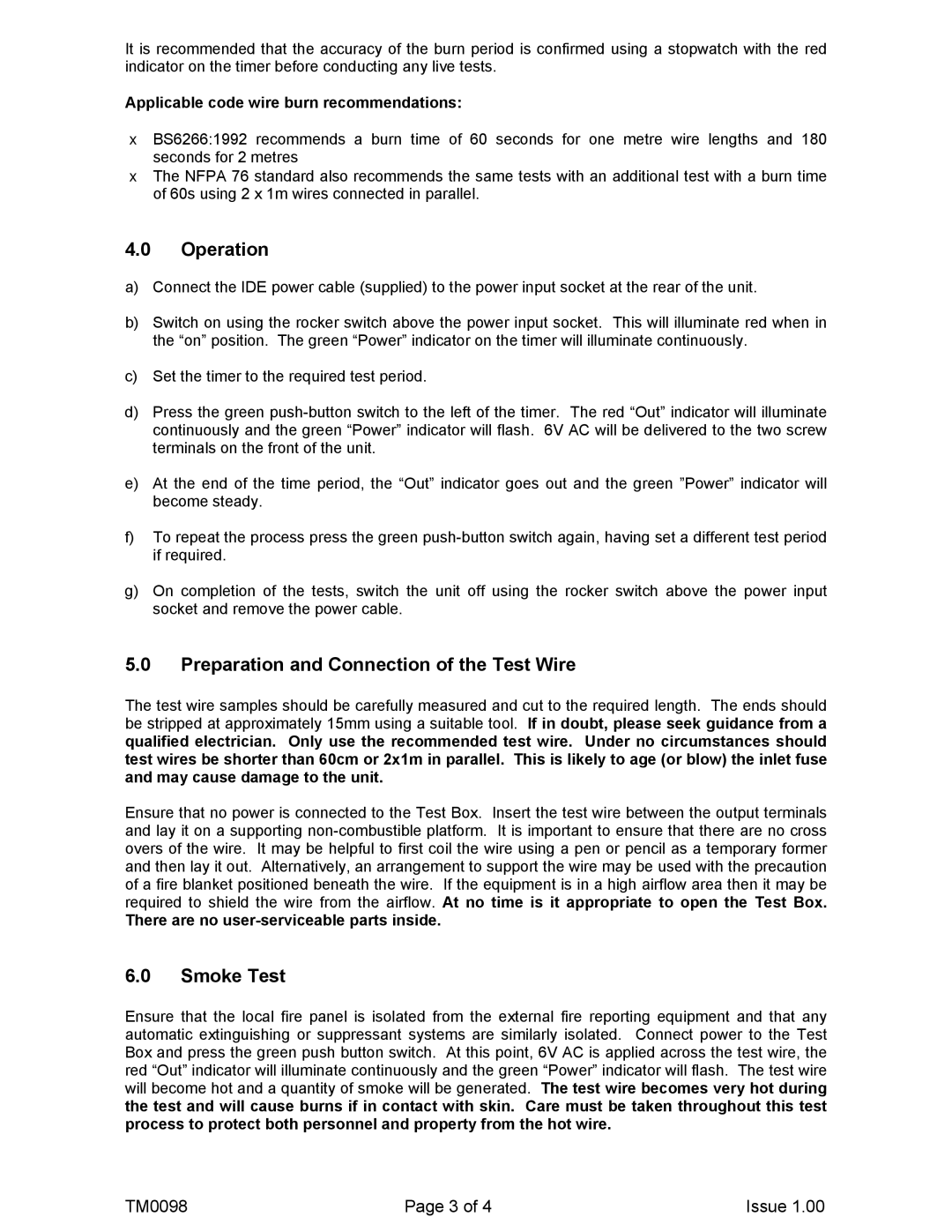TM0098 specifications
The Kidde TM0098 is a sophisticated and reliable smoke and carbon monoxide detector designed for modern homes and safety-conscious consumers. This device reflects a perfect blend of innovation and practicality, ensuring that families are protected from the dangers posed by smoke and CO emissions.One of the standout features of the Kidde TM0098 is its dual-sensor technology. This means the alarm is equipped with both photoelectric and ionization sensing capabilities, which enhances its ability to detect a broader range of fire types. The photoelectric sensor excels at detecting smoldering fires, which typically produce more smoke but less heat. Conversely, the ionization sensor is more effective at identifying fast-flaming fires. This dual approach ensures that users receive a quicker response to various fire situations, making the TM0098 one of the most versatile alarms available.
Another noteworthy aspect of the Kidde TM0098 is its built-in digital display. This feature provides real-time updates, allowing users to monitor the levels of carbon monoxide in the environment. This kind of transparency is vital, as carbon monoxide is an odorless, colorless gas that can be fatal at high concentrations. The display makes it easy for homeowners to stay informed and react promptly if CO levels rise.
The TM0098 also incorporates smart technology, allowing it to connect with other Kidde devices through a wireless network. This feature enables the creation of a comprehensive safety system where alarms can communicate with one another. When one detector senses danger, all connected alarms will sound, ensuring that everyone in the household is alerted regardless of where they are.
The Kidde TM0098 is designed for easy installation and features a sleek, modern design that complements any home decor. It is powered by AA batteries, ensuring uninterrupted operation. Furthermore, the device is equipped with a "test" button, allowing users to easily verify functionality.
In summary, the Kidde TM0098 is an essential safety device, integrating dual-sensor technology, a digital display for carbon monoxide levels, and reliable connectivity features. Its innovative characteristics make it an indispensable tool in any home, helping to provide peace of mind for families concerned about fire and carbon monoxide dangers. Whether situated in a hallway, bedroom, or living space, the TM0098 ensures that safety is always within reach.
